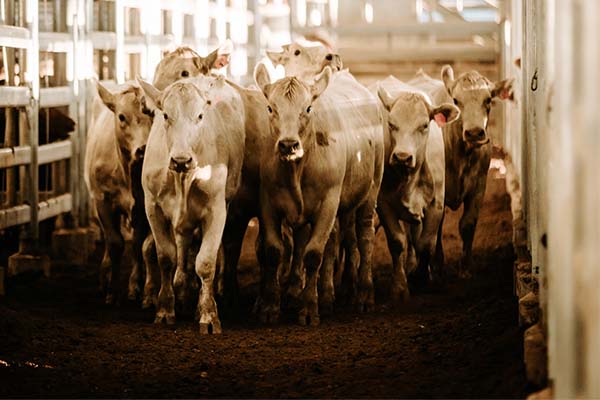The northern Australian live cattle export market is gaining momentum, with export volumes projected to reach their highest levels in five years.

This growth is being driven by strong buyer interest, consistent cattle supply following several favourable northern seasons, and supportive policy signals from Indonesia’s new President. These include breeder cattle imports and school lunch programs that are expected to sustain demand.
Prices have firmed across key northern ports, though rising cattle prices domestically may test the limits of demand, particularly in price-sensitive markets such as Vietnam.
Indonesia remains the dominant buyer, with market movements shaped primarily by northern Australian supply, which remains strong.
According to Paul McCormick, Elders Northern Australia Livestock Manager, premium Brahman cattle continue to be the preferred choice.
“The trend for high grade Brahman as a strong preference continues,” Paul said.
“There is, however, an emergence of a ‘b’ line where exporters and importers are making use of crossbred and secondary cattle as price fighters in the market.
“If affordability of Brahman is tough, there is a second option, instead of no sale or discounting the tops.”
This shift is largely a response to economic pressures in destination markets.
“Tight economic conditions are driving that trend. Just like in Australia, cost of living is an issue,” Paul said.
While some have pointed to reduced Indian buffalo availability as a factor for the gains in cattle, Paul believes pricing is the real driver.
“It is about the relative cost of protein internationally. Australian cattle prices have been very close to the price of Indian buffalo meat,” Paul said.
“A risk for this is rising cattle prices which will make the buffalo meat attractive again. The preference overseas is for Australian cattle, but only at an affordable price.”
Northern live export prices may also be tracking southern Australian cattle markets higher, though Brahman cattle are less influenced by southern dynamics due to tick protocols. Still, the implications of higher prices are being felt across the broader cattle market.
“If the domestic sector put more pressure on the Brahman supply pool it will add to the cost of exported goods in Indonesia,” Paul said.
Looking ahead, feeding strategies in Indonesia may evolve in response to rising ration costs and changing commodity dynamics.
“I'm in Indonesia right now and shocked at the current cost of the rations here,” Paul said.
“I expect to see a more Australian style of feeding develop, where we might see heavier feeders fed for shorter days than the industry is used to.”
This shift is being driven by changes in feed availability and efficiency.
“10 years ago the ration was cheap, so if it took 120 days to target, not so much of a problem. But now it seems that shorter days might become more efficient going forward,” Paul explained.
“The main driver of this is that technology has advanced and growers and consumers have the ability to extract more of what they want from raw materials leaving less and lower grade byproduct available for cattle feed.”
The northern live export market continues to reflect a complex mix of seasonal supply conditions, pricing pressures and evolving feedlot strategies in key destinations. Price movements and protein competition remain central to how the trade plays out in the months ahead.
The information contained in this article is given for the purpose of providing general information only, and while Elders has exercised reasonable care, skill and diligence in its preparation, many factors (including environmental and seasonal) can impact its accuracy and currency. Accordingly, the information should not be relied upon under any circumstances and Elders assumes no liability for any loss consequently suffered. If you would like to speak to someone for tailored advice relating to any of the matters referred to in this article, please contact Elders.
